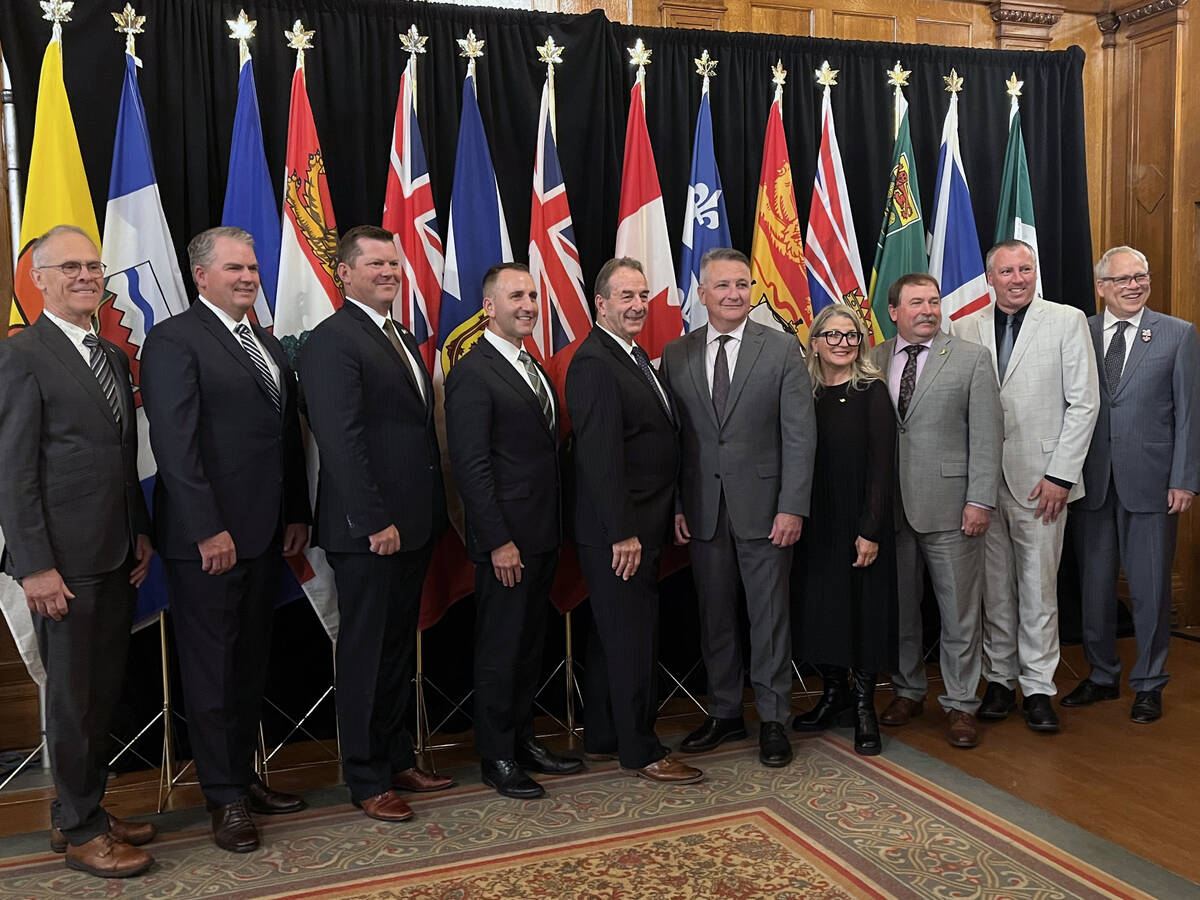Never in Canada’s 145 years have monarch butterflies travelled so far north and west into Alberta.
Uncommonly strong easterly winds have blown the insects farther north and west than they can get on their own.
“This is a once every 10 years, at best, phenomenon. The large numbers that we saw this year, I don’t think anybody (has seen) in living memory,” said Felix Sperling, a professor of biological sciences at the University of Alberta who specializes in the study of butterfly evolutionary biology.
Sperling estimates they number in the thousands. The Saskatoon to Edmonton corridor has been the route that the largest number has taken to reach Alberta, he added.
Read Also

Agriculture ministers commit to enhancing competitiveness
Canadian ag ministers said they want to ensure farmers, ranchers and processors are competitive through ongoing regulatory reform and business risk management programs that work.
Before this year, monarchs had never been recorded further north than Lac La Biche, which occurred in 1977. Monarchs were recently spotted at Fort Assiniboine, about 160 km northwest of Edmonton.
“That’s the farthest northwest that I’m aware of this year,” Sperling said.
Monarch butterflies are probably the most well-known butterfly in North America. Not only are they famous for their majestically patterned wingspan with black-orange-white colours, but they are also known for the massive migrations they take throughout the continent.
Beginning life as eggs and hatching as larvae, monarchs depend on milkweed plants, which the larvae eat.
Larvae become juicy and colourful caterpillars before entering the pupa stage and then emerge as gloriously coloured adults. Their distinctive pattern advises predators that they are foul tasting.
“There are not a whole lot of natural predators because they’re distasteful. Their main mortality is weather,” said Sperling.
Monarchs are much tougher than most butterflies, but recent torrential rains and burly winds have taken their toll.
“Some of the ones that are here now in early July are ragged as hell. They’re not long for this world,” he said.
The butterflies are born to fly, but constant flapping damages their wings.
“They flap their wings long enough and it’s like a flag. It starts to fray at the edges,” he said.
After spending several months in central Mexico, broods of Monarchs begin the trek north to southern Texas. Their offspring will make it as far as Kansas or Iowa.
From there the next generation will head for northern Michigan or somewhere in the upper Midwest. It’s that generation that has made it to Alberta, about 3,000 km.
The prairie generation that will head back to Mexico is now in the early larvae stage attached to milkweed plants. Come August, adult monarchs will begin their instinctual journey to central Mexico, where they will lay their eggs. It’s a 6,000 km trip from Edmonton.
Monarchs typically live less than two months in ideal conditions. Larvae produced on the Prairies, assisted by thermals, can fly all the way to central Mexico and can live up to eight months.
“What takes three and four generations to make it north only takes one generation to go south,” said Sperling.
“It’s one of those things that if you want to live fast you die young. If you want to live slow, you die old.”















